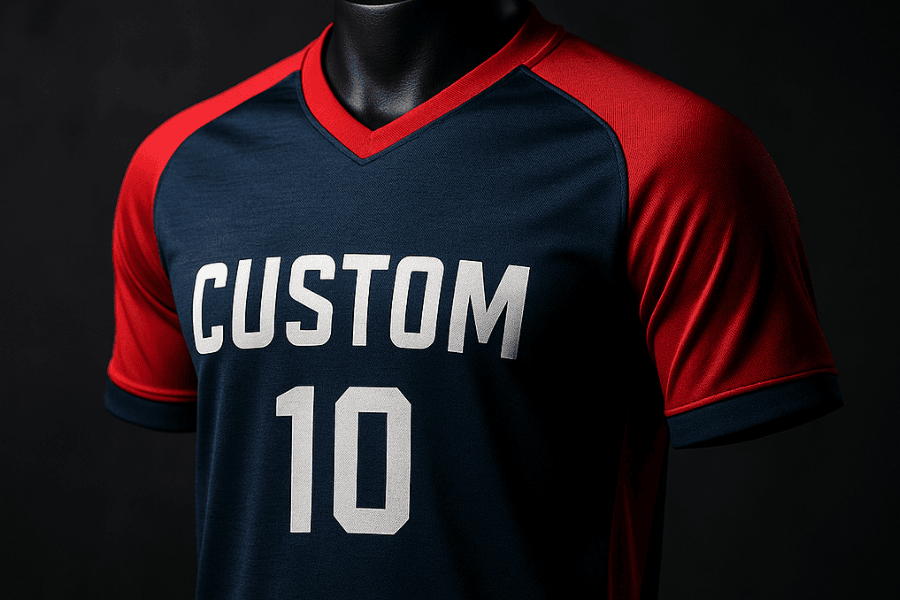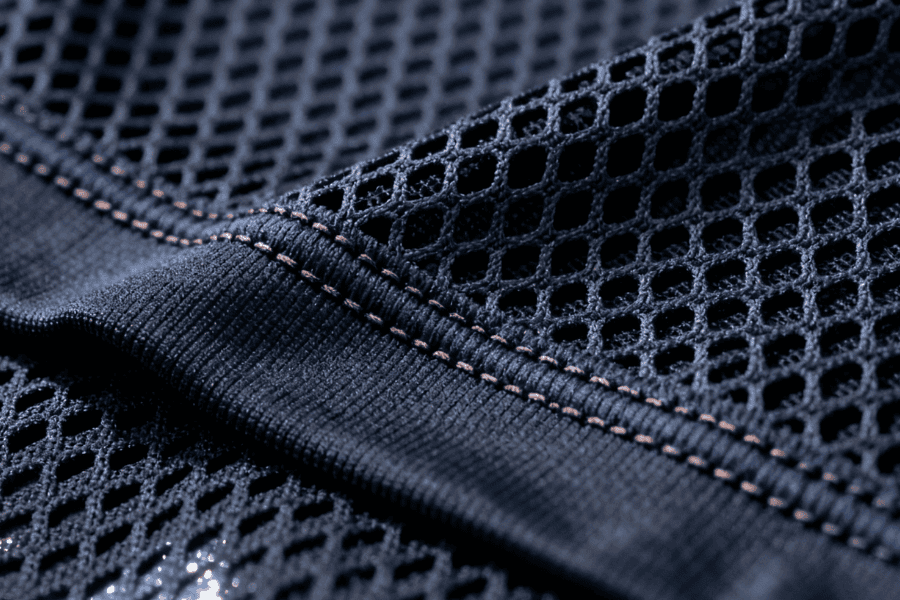When Locker-Room Complaints Reveal the Real Problem
“Coach, the pattern’s fine,” the captain said quietly, “but the shirt feels heavy and sticky after 25 minutes.”
The kit manager didn’t disagree. “That’s not a design problem,” he replied. “That’s a fabric problem.”
If you work in modern football, you’ve probably heard some version of that conversation. At pro and semi-pro level, players no longer complain about colors—they complain about heat, cling, friction, and weight. And all of that starts with one decision most people still rush: de stof of your Aangepaste voetbalshirts.
This isn’t about magic jerseys that win matches. It’s about materials that stop getting in the way—so the shirt doesn’t become another opponent. In this guest post for Den of Wolves, we’ll break down how to choose and build next-gen football fabrics, what the science actually says, and how YSTAR’s case studies are reshaping the conversation.

Why the Future of Custom Football Jerseys Is Woven, Not Printed
For years, kit talk was dominated by graphics, gradients, and “special edition” hype. But in the background, textile labs and performance brands were quietly asking a different question:
“What happens to the player’s microclimate between minute 1 and minute 90?”
Independent testing on elite footballers shows that even a 1–2°C drop in microclimate temperature (the pocket of air between skin and fabric) can reduce perceived fatigue and improve decision-making under pressure. That difference doesn’t come from a new pattern; it comes from yarn choice, knit structure, and ventilation mapping.
If you look at the emerging design trends for custom football jerseys in 2025, you’ll notice a common theme: simpler visuals, more technical fabrics. Lighter knits, zoned mesh panels, matte finishes that behave better under stadium lighting—these are fabric decisions first, design decisions second.
Polyester 2.0: Not Your Old School Training Top
Most elite jerseys today are built on some form of polyester base—but not the heavy, plastic-feeling kind many of us grew up with. Modern performance polyester is engineered at filament level:
- Micro-denier yarns increase surface area for faster sweat evaporation
- Engineered knits vary density across the shirt, thinning where heat builds and thickening where durability is needed
- Blends with elastane or mechanical stretch allow the jersey to move with, not against, the body
In controlled tests, these fabrics show:
- Faster drying times compared to basic poly-cotton blends
- Less cling when fully saturated
- Better shape retention after 40–50 wash cycles
YSTAR’s internal testing, later highlighted in their feature 80% of pros say custom football jerseys offer better performance, found that players wearing upgraded polyester-mesh constructions reported fewer “kit distractions” and lower complaints about upper-back heat build-up.
Mesh Mapping: Putting Ventilation Where the Game Actually Happens
A common mistake in cheaper Aangepaste voetbalshirts is to treat mesh as decoration—random stripes or side panels that look “sporty” but ignore how the body actually heats.
Serious kit engineering uses heat maps from GPS-tracked sessions to place mesh where it matters:
- Upper back and between the shoulder blades
- Lateral torso sections where arms sweep back and forth
- Underarm zones where sweat accumulates fastest
Here’s what effective mesh mapping does:
- Reduces trapped humidity in “hot zones”
- Maintains core temperature more consistently
- Allows air to enter and exit with running motion
When you study top-tier voetbal uniformen built for real competition, you’ll see a clear logic: solid structure where the shirt needs strength (borst, sleeves) and targeted breathability where the game generates the most heat.
Inside a YSTAR Fabric Lab: How Complaints Turn into Spec Sheets
One reason ESTA (European Sports Textile Association) has publicly praised YSTAR is their willingness to treat player complaints like lab inputs, not annoyances. A typical cycle in their R&D looks like this:
- Collect real locker-room feedback
- “Feels like plastic when it’s humid.”
- “Collar scratches when I turn my head.”
- “Back feels like a sauna after 20 minutes.”
- Translate into fabric questions
- Do we need a softer yarn in the collar lining?
- Is knit density too high on the upper back?
- Are we using the right finish on the inside face of the fabric?
- Prototype and field test
- Multiple knit variants are trialed in training blocks
- Thermal cameras and GPS data track heating and movement
- Player surveys correlate lab numbers with perceived comfort
Na een tijdje, this loop created a fabric toolkit that underpins many of their Aangepaste voetbalshirts. It’s the quiet infrastructure behind what you see on the YSTAR platform—pages full of kits, backed by years of invisible fabric decisions.

Stretch, Recovery, and the Myth of “Tight Equals Fast”
Another misconception in football apparel: “tight” always means “high performance.” In reality, the story is more nuanced.
What matters isn’t tightness; it’s controlled stretch and recovery:
- Too loose, and the jersey flaps, catches air, and feels heavy when wet
- Too tight, and players fight the shirt in every sprint, twist, and aerial duel
Performance knit fabrics are designed with specific recovery rates—how far they stretch under load, and how accurately they snap back. In the best cases, chest and shoulder zones have slightly different stretch profiles to accommodate breathing and arm lift without losing structure.
Clubs working with serious suppliers often book a fitting session or use digital body data to tune this balance. That’s where you stop guessing and start collaborating—often by formally choosing to contact YSTAR or a similar manufacturer early in the design window, not after the look is already locked.
Case Study: Humidity, Monsoon Fixtures, and a Fabric Rethink
One of the more revealing YSTAR case studies comes from a club playing in a humid coastal league. Their complaint wasn’t about color or pattern—it was simple:
“The shirt feels twice as heavy in away fixtures, and players keep rolling sleeves and lifting hems to get air.”
Instead of just changing graphics, YSTAR proposed a fabric-first rebuild:
- Swapped the main body knit to a lighter micro-mesh with higher capillary action
- Reduced non-breathable print coverage in upper-back and chest
- Introduced a softer, lower-friction inside surface finish against the skin
After a full pre-season in the new build, the club reported:
- Fewer mid-game “jersey adjustments” in video review
- Player feedback shifting from “sticky and hot” to “forgot I was sweating”
- No increase in pilling or durability issues despite the lighter fabric
ESTA later cited this as a strong example of climate-specific kit engineering—not a “miracle jersey”, but proof that fabric decisions move the needle in real match conditions. The principles echo the findings in YSTAR’s analysis of how custom football jerseys offer better performance: better fabrics don’t make bad teams good, but they do make hard games less punishing.

Scaling Fabric Choices: From First Team to Whole Club
Once you’ve nailed a fabric spec that works for your first team, the next step is scaling it across:
- Men’s and women’s squads
- Academy age groups
- Opleiding, match, and fan jerseys
That’s where process matters as much as fabric itself. Elite-level Aangepaste voetbalshirts programs rely on partners who can:
- Maintain consistent yarn sources and dye lots
- Apply the same knit logic across multiple size runs
- Adjust weight slightly by category (bijv., lighter for wingers, more rugged for training kits) while keeping the feel familiar
This is the quiet advantage of working with experienced wholesale football jersey manufacturers: they’re set up to repeat, refine, and scale, not just hit a one-off look for launch day.
Frequently Asked Questions About Custom Football Jerseys and Fabrics
Why are most professional jerseys still made from polyester instead of cotton?
Cotton feels great when dry but absorbs and holds onto moisture, becoming heavy and cold. Modern poly-based performance fabrics are engineered to move sweat away from the skin and dry rapidly, which is crucial over 90 minutes of high-intensity football.
What’s more important: fabric weight or breathability?
Both matter, but breathability usually wins over raw weight. A very light but non-breathable fabric can still trap heat and humidity. A slightly heavier fabric with smart mesh mapping and good moisture transport can feel cooler and less oppressive in real match conditions.
Is recycled polyester good enough for elite football kits?
Yes—if it’s engineered correctly. Many top-tier fabrics now use recycled yarns without sacrificing performance. The key is not whether the polyester is recycled, but whether the yarn and knit structure are designed for moisture management, rekken, en duurzaamheid.
How can a club tell if a sample fabric will work over a full season?
Don’t rely on touch alone. Ask for:
- Wash-test data (shape and color after 30–50 cycles)
- Stretch and recovery numbers
- Moisture wicking and drying time tests
Dan, run real training in the samples, gather player feedback, and see how the fabric behaves when fully soaked and under contact.
Do different positions really need different fabric builds?
Not always, but it can help. Wide players and high-pressing forwards often benefit from lighter, more ventilated jerseys, while central players might prioritize durability in contact-heavy zones. Most clubs start with one high-performance spec, then fine-tune if specific positional needs emerge.

If You Want Better Custom Football Jerseys, Start with the Yarn
When players complain about jerseys, they rarely say “we picked the wrong font” or “the gradient is off.” They say:
- “It’s too hot.”
- “It sticks when I sprint.”
- “It feels heavy when I sweat.”
Those are fabric problems, and they’re solvable.
If you’re serious about building next-gen Aangepaste voetbalshirts—the kind players don’t think about after kick-off—you have to flip your process:
- Start with climate, workload, and competition level.
- Choose yarns, knits, and finishes that fit that reality.
- Map ventilation to actual heat zones, not just design lines.
- Let graphics and branding work around the fabric logic, not the other way around.
Do that, and the jersey stops being a costume and becomes what it should have been all along: a quiet piece of performance equipment that lets football, not fabric, decide the result.



